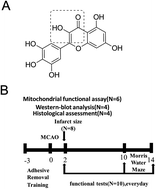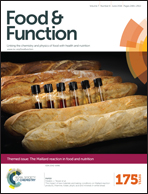Myricetin ameliorates brain injury and neurological deficits via Nrf2 activation after experimental stroke in middle-aged rats
Abstract
The aim of our study was to investigate the protective effects and underlying mechanisms of myricetin, a bioactive food compound, on brain injury and neurological deficits after ischemic stroke. Treatment of myricetin significantly attenuated oxygen–glucose deprivation (OGD)-induced cell death in SHSY5Y cells in vitro. In a rat model of cerebral ischemia, myricetin was administered intragastrically at 2 h before and every day after middle cerebral artery occlusion (MCAO). The effects of myricetin were evaluated by various biochemical assays and neurobehavioral tests. Treatment with myricetin resulted in decreased infarction volume, reduced neuronal loss as well as lessened production of reactive oxygen species (ROS) and malondialdehyde following MCAO. We also found evidence that myricetin treatment could enhance the activity of antioxidant enzymes and mitochondrial function. Meanwhile, myricetin treatment reversed the suppression of Nrf2 nuclear translocation, and increased HO-1 expression in the ipsilateral ischemic brain and in the normal brain. Moreover, our results suggested that myricetin treatment resulted in significant improvement in neurological function. In conclusion, treatment with myricetin attenuates brain injury and neurological deficits in a rat model of cerebral ischemia via improvement of mitochondrial function and activation of the Nrf2 pathway.


 Please wait while we load your content...
Please wait while we load your content...